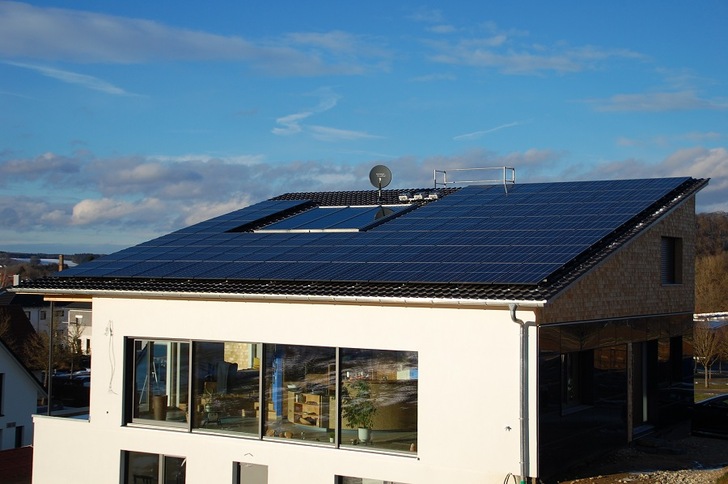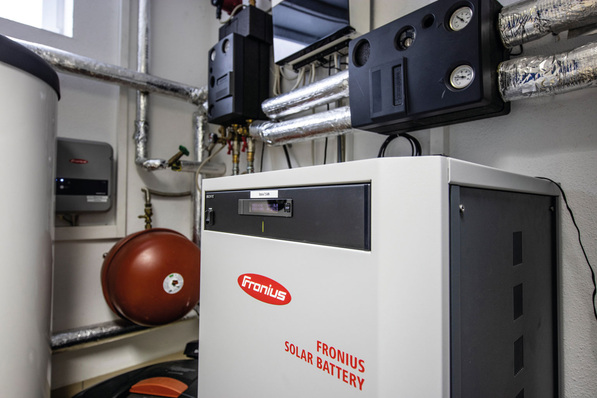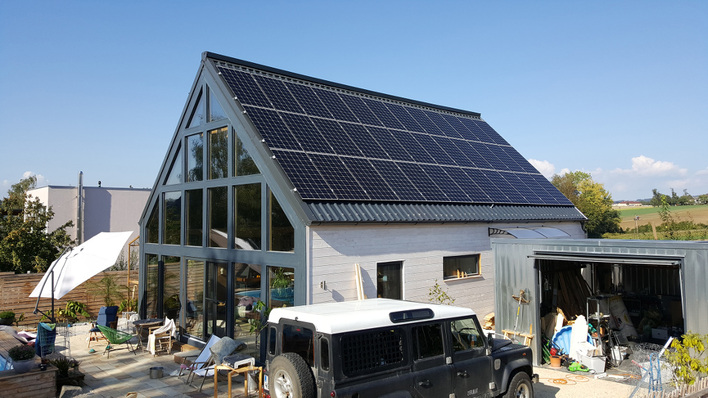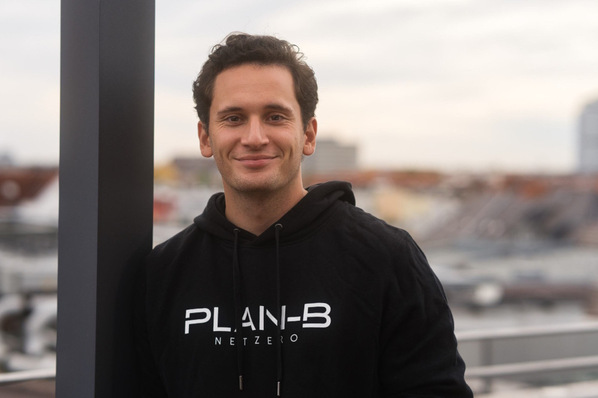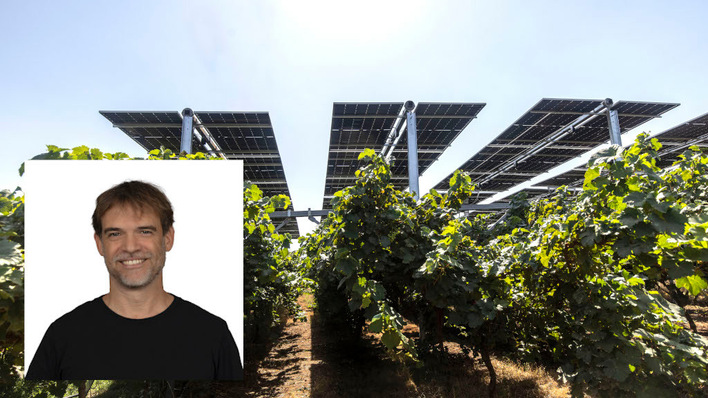The management team of Hörmann Solartechnik, a solar installation firm based in Zusmarshausen, also uses 100% solar energy for its personal use. The Hörmann family has just fulfilled its dream of building its own energy self-sufficient home using only solar power, powered by Q CELLS. Hanwha Q CELLS has supported this ambitious family project by supplying its Q.PEAK DUO-G5 solar modules.
The solar system has an output of 20 kW and was installed on the roof of the Hörmann’s newly built house in Zusmarshausen, Bavaria. The PV array has an annual output of approximately 20,000 kWh and delivers sustainable contribution towards ensuring that the Hörmann family lives off energy that is 100% self-sufficient.
Integrating the Power-to-Gas principle
The system combination of solar system, battery storage, electrolyser and fuel cell in the Hörmann family's house ensures CO2-free energy supply by converting and storing the solar electricity generated during the day into hydrogen, utilizing the "Power-to-Gas" principle. At night and in winter, the hydrogen is converted back into household electricity. Together with the battery storage system, it not only ensures power supply for the house, but can also meet the home’s heating requirements, and charge the family's electric car. With such a system, the only source of power required to deliver electricity, mobility and warmth all-year round is the sun. This excellent passive house impressively demonstrates how a CO2-free energy, fully independent of the grid or additional external sources of power, is already possible. It is for this reason that this project received the Federal Prize for Outstanding Innovative Achievements by the Federal Ministry of Economics and Technology.
Attractive method of storing solar energy
The "Power-to-Gas" principle, which converts solar electricity into hydrogen, is rapidly becoming another attractive method of storing solar energy economically and complements more typical battery storage technology. This trend has been forecast to expand, according to a recent study by the Finnish Lappeenranta University of Technology (LUT), which also concludes that solar energy could account for 69% of the world’s global electricity supply by 2050. This model scenario is made possible by the rapidly declining electricity production costs of solar power, which already make solar energy the cheapest form of energy generation in many regions of the world. (HCN)
Stay informed, get our free newsletter twice a week. Register here


